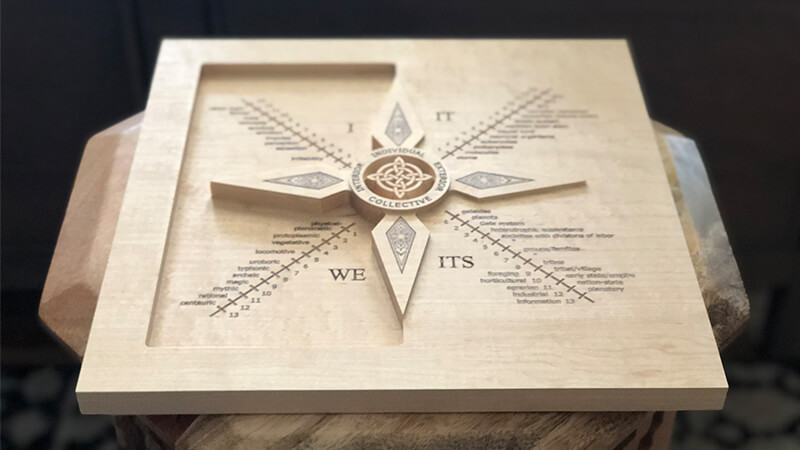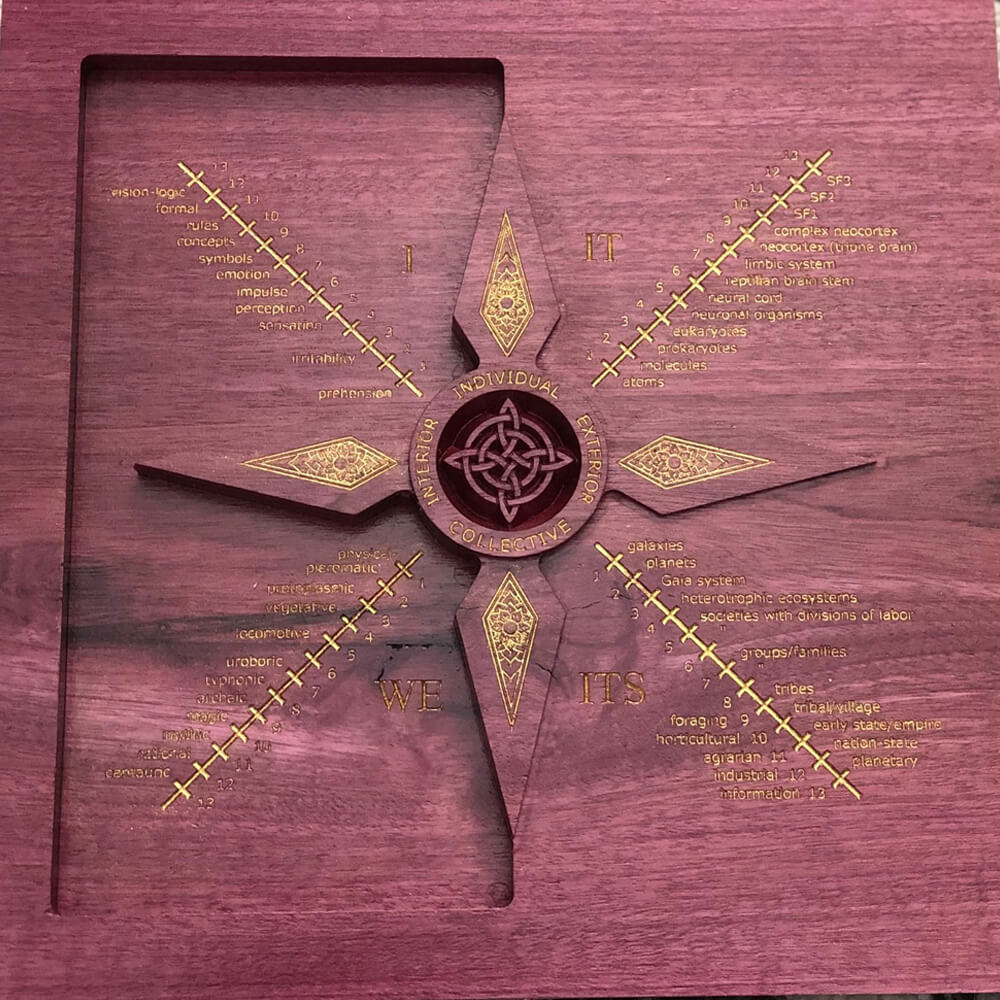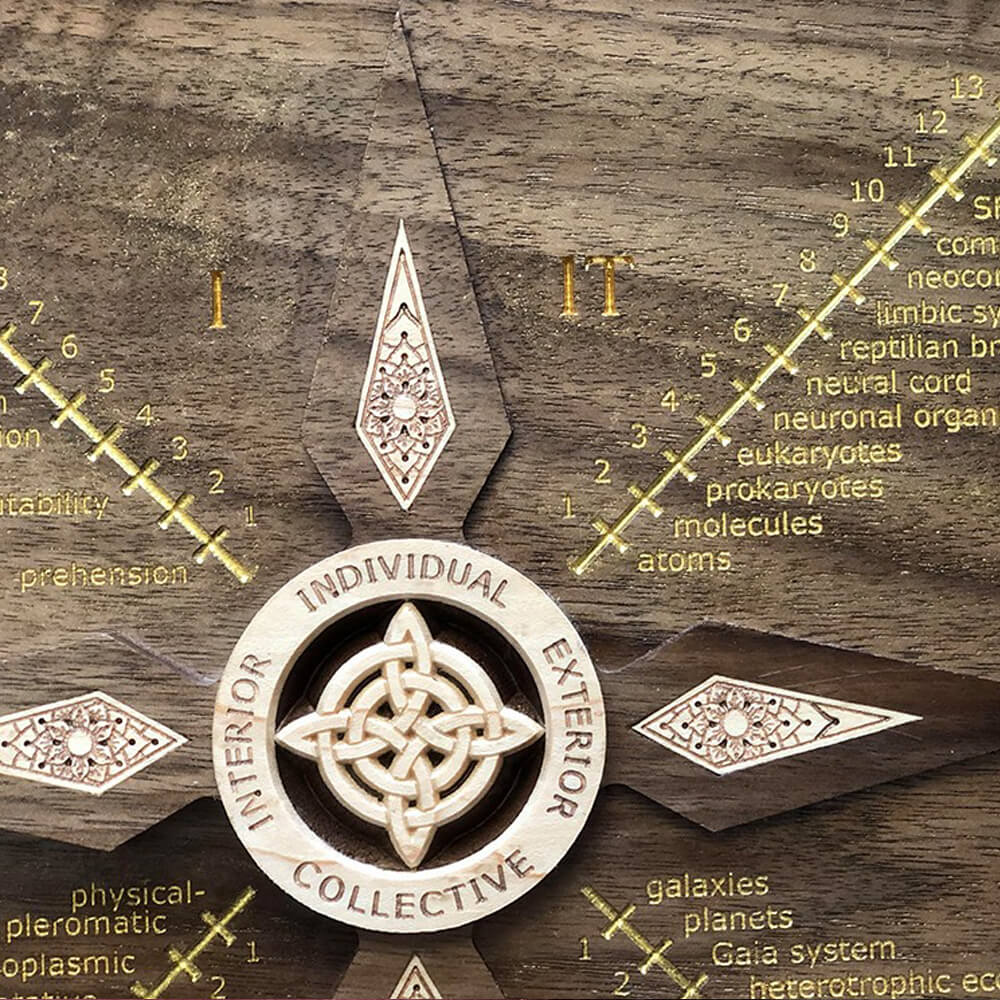
Become a member to access the full episode
Start building your big picture mind & support the global emergence of Integral consciousness

“Integral Life is the most important and globally-relevant platform for the leading edge of Integral consciousness evolution”
– Eugene P.
en and Corey take a in-depth tour through one of Ken’s most well-known contributions to integral philosophy: the Four Quadrants. Watch as Ken shares his personal story about the origins of the Four Quadrant model — the day everything came together — as he weaves 3rd-person theoretical descriptions of the model with his own 1st-person experience and creative process. We also take a close look at the nature of the quadrants themselves, and ponder how exactly these fundamental dimensions of existence — dimensions that are every bit as real as the four dimensions of space-time — came into being in the first place.
Ken and Corey also explore a number of other questions related to the four quadrants, including the important distinctions between parts, wholes, and systems, how to use the four quadrants as a typology, and Ken’s fascinating integral analysis of a classic album by The Who in a segment titled “Quadrants, Quadrivia, Quadrophenia”.
What Are the Four Quadrants?
The Four Quadrants represent four basic perspective-dimensions of all individual holons: the interior and exterior of the individual and collective. These are designated as the Upper Left (interior-individual), Upper Right (exterior-individual), Lower Left (interior- collective), and Lower Right (exterior-collective). The quadrants correspond with “I,” “We,” “It,” and “Its,” which are often summarized as the Big Three: “I,” “We,” and “It/s.” The Big Three are correlated with (although not identical to) the value spheres of Art, Morals, and Science, and with Plato’s value judgments of the Good, the True, and the Beautiful.
What Is Quadrivia?
Literally “four ways,” quadrivia means the use of all four quadrants as perspectives with which one can view any occasion. It’s the difference between something having four quadrants, versus seeing or enacting something through the four quadrants (e.g. Shakespeare’s Hamlet can be enacted through the four quadrants but does not itself possess four quadrants.)
Image: Four Quadrants: Purpleheart + Gold by Corey deVos
Music by Stuart Davis
Previous Episodes of The Ken Show
Transforming Self, Society, and the Spaces Between Us
Get a Custom Four Quadrant Artwork For Yourself!
 In this episode I show some of my custom Four Quadrant artworks. The good news is, they are available for commission! My goal was to take a graphic that has generated a tremendous amount of meaning for so many of us, and to transform it into a piece of art that any integralist would be proud to display in their home, office, or community center. I make these in a very wide variety of styles, as seen below, using the most beautiful and unique hardwoods that I can find.
In this episode I show some of my custom Four Quadrant artworks. The good news is, they are available for commission! My goal was to take a graphic that has generated a tremendous amount of meaning for so many of us, and to transform it into a piece of art that any integralist would be proud to display in their home, office, or community center. I make these in a very wide variety of styles, as seen below, using the most beautiful and unique hardwoods that I can find.
If you would like to purchase one for yourself, please check out the samples here, or just send an email to corey@integrallife.com and I will be happy to work with you to create a custom piece just for you!
More Guided Tours
This episode is the latest in a series of in-depth discussions about the major elements of Integral theory. You can find other installments in this ongoing series below.
How to Think Integrally
Ken Wilber and Corey deVos
Ken and Corey explore some of the major qualities of integral thinking at the “vision logic” or “construct aware” stages of development, focusing on the three primary heuristics of integral thinking — non-exclusion (“everyone is right”), enfoldment (“some are more right than others”), and enactment (“if you want to know that, do this.”)
Growing Up: A Guided Tour
Ken Wilber and Corey deVos
Here we explore one of the most central elements of integral metatheory: growing up through multiple stages of developmental maturity. Watch as Ken and Corey offer a guided tour through each of the major stages on the Path of Growing Up — an exploration of your own greatest, deepest potentials — and offer some simple practices to help you actualize those potentials.
The Many Ways We Grow
Ken Wilber and Corey deVos
Human development is uneven, which means that we are better at some things than we are at others. Some skills come more naturally to us, and others are more difficult to acquire. Watch as Ken and Corey explore each of these developmental capacities in detail, offering a powerful summary of human potentials, talents, and intelligences — a comprehensive map of the territory of “you” that will help guide your own ongoing growth and development.
The Varieties of Integral Spiritual Experience
Ken Wilber and Corey deVos
Ken and Corey explore the path of Waking Up — a guided tour through temporary states of consciousness that include everything from emotional states to chemically-induced states to the direct, immediate experience of timeless reality, revealing an infinitely renewable source of energy, resilience, and creative inspiration that rests at the very center of you.
Click here to find a full list of all Ken Show episodes, which include both video or audio.
About Ken Wilber
Ken Wilber is a preeminent scholar of the Integral stage of human development. He is an internationally acknowledged leader, founder of Integral Institute, and co-founder of Integral Life. Ken is the originator of arguably the first truly comprehensive or integrative world philosophy, aptly named “Integral Theory”.
About Corey deVos
Corey W. deVos is editor and producer of Integral Life. He has worked for Integral Institute/Integal Life since Spring of 2003, and has been a student of integral theory and practice since 1996. Corey is also a professional woodworker, and many of his artworks can be found in his VisionLogix art gallery.




 November 6, 2023
November 6, 2023







